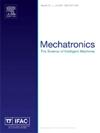动态触发DYC干预的多轴分布式驱动车辆协调控制及基于kkt的转矩优化分配
IF 3.1
3区 计算机科学
Q2 AUTOMATION & CONTROL SYSTEMS
引用次数: 0
摘要
多轴分布式驱动车辆在横向路径跟踪、偏航稳定性干预和纵向速度控制等方面存在着过度驱动、内部动力学和非线性外部干扰等问题。这些问题会显著降低整体控制性能,特别是在复杂的驾驶条件下。为了解决这些问题,本文提出了一种集成路径跟踪、偏航稳定性干预、纵向驱动控制和最优转矩分配的协调控制框架。首先,设计了基于线性变参动态模型的鲁棒路径跟踪控制器和基于线性滑模方法的纵向速度控制器。随后,提出了一种基于非线性动态触发的非奇异终端滑模控制(NTSMC)的直接偏航力矩控制(DYC)策略,以减轻过度干预引起的性能下降。最后,提出了一种基于Karush-Kuhn-Tucker (KKT)条件的最优转矩分配方法,以保证解的可行性。通过硬件在环(HiL)实验验证了所提协调框架的有效性和优越性。本文章由计算机程序翻译,如有差异,请以英文原文为准。
Coordination control of multi-axle distributed drive vehicle with dynamically-triggered DYC intervention and KKT-based torque optimization distribution
Multi-axle distributed drive vehicles, characterized by over-actuation, internal dynamics, and nonlinear external disturbances, frequently encounter coordination challenges in lateral path tracking, yaw stability intervention, and longitudinal speed control. These issues can significantly degrade overall control performance, particularly under complex driving conditions. To address them, this paper proposes a coordinated control framework integrating path tracking, yaw stability intervention, longitudinal drive control, and optimal torque distribution. First, a robust path tracking controller based on a linear parameter-varying (LPV) dynamic model is designed and a longitudinal speed controller using a linear sliding mode approach are designed. Subsequently, a direct yaw-moment control (DYC) strategy based on nonsingular terminal sliding mode control (NTSMC) with nonlinear dynamic triggering is introduced to mitigate performance degradation induced by excessive interventions. Finally, an optimal torque distribution method based on the Karush–Kuhn–Tucker (KKT) conditions is developed to ensure the feasibility of the solutions. The effectiveness and superiority of the proposed coordination framework are validated through hardware-in-the-loop (HiL) experiments.
求助全文
通过发布文献求助,成功后即可免费获取论文全文。
去求助
来源期刊

Mechatronics
工程技术-工程:电子与电气
CiteScore
5.90
自引率
9.10%
发文量
0
审稿时长
109 days
期刊介绍:
Mechatronics is the synergistic combination of precision mechanical engineering, electronic control and systems thinking in the design of products and manufacturing processes. It relates to the design of systems, devices and products aimed at achieving an optimal balance between basic mechanical structure and its overall control. The purpose of this journal is to provide rapid publication of topical papers featuring practical developments in mechatronics. It will cover a wide range of application areas including consumer product design, instrumentation, manufacturing methods, computer integration and process and device control, and will attract a readership from across the industrial and academic research spectrum. Particular importance will be attached to aspects of innovation in mechatronics design philosophy which illustrate the benefits obtainable by an a priori integration of functionality with embedded microprocessor control. A major item will be the design of machines, devices and systems possessing a degree of computer based intelligence. The journal seeks to publish research progress in this field with an emphasis on the applied rather than the theoretical. It will also serve the dual role of bringing greater recognition to this important area of engineering.
 求助内容:
求助内容: 应助结果提醒方式:
应助结果提醒方式:


